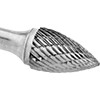Filter by
Shape
For Use On
File Shape
File Type
Sold As
Abrasive Material
Flexibility
Edge Tooth Style
Diameter
DFARS Specialty Metals
Export Control Classification Number (ECCN)
Fabricating and Machining
Containers, Storage, and Furniture
Building and Machinery Hardware
Communication
Fastening and Joining
Measuring and Inspecting





































































